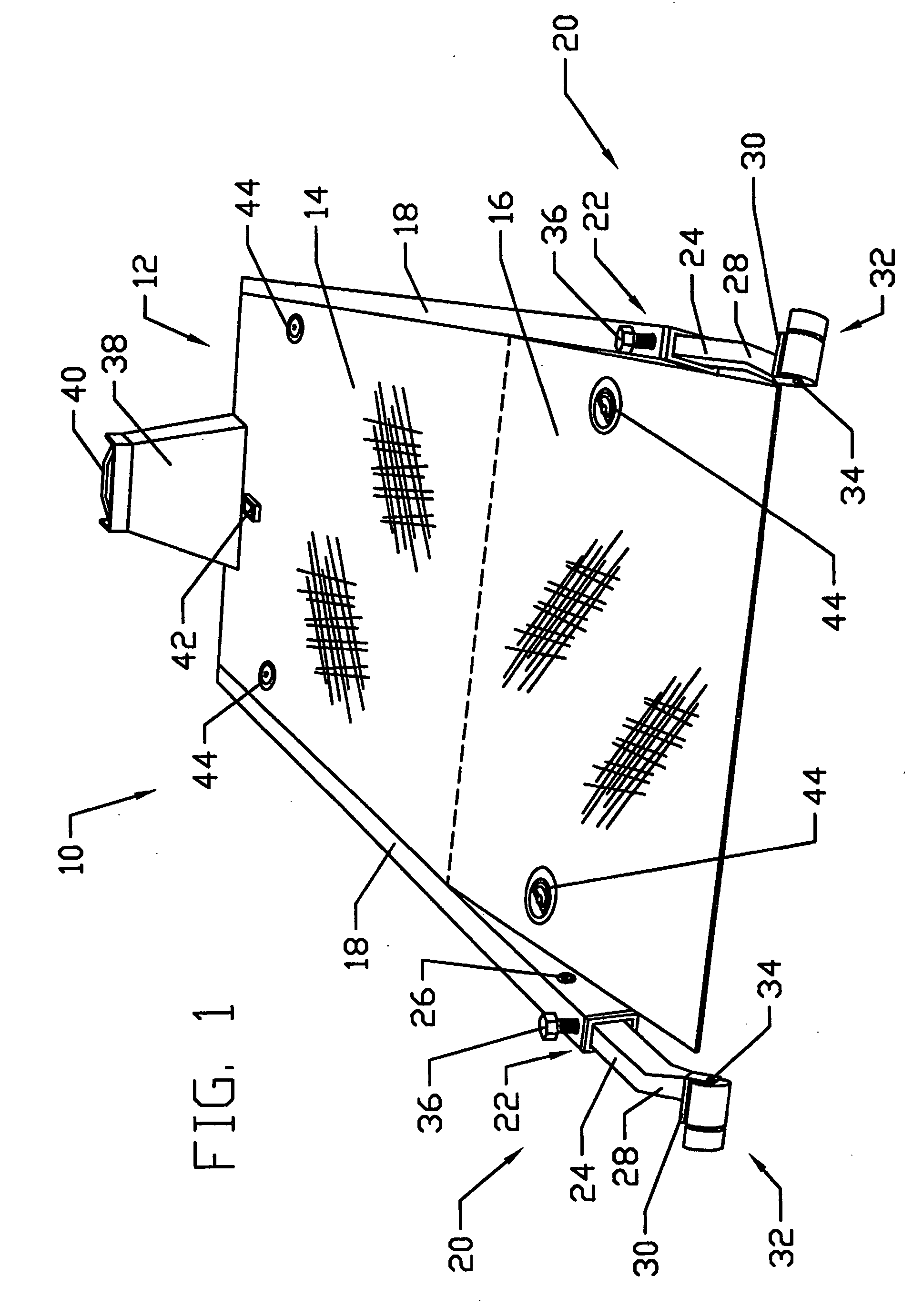Low approach angle cargo flatbed assembly
a flatbed and low angle technology, applied in the direction of transportation and packaging, transportation items, loading/unloading vehicle arrangment, etc., can solve the problems of increasing the load, inclination of the loading surface too high or too steep, and the current size of the material handling vehicle and other material handling vehicles, etc., to achieve easy loading and unloading, low dimensions, and less loading effort or force
- Summary
- Abstract
- Description
- Claims
- Application Information
AI Technical Summary
Benefits of technology
Problems solved by technology
Method used
Image
Examples
Embodiment Construction
[0031] In FIGS. 1-6c, drawings of a preferred embodiment are depicted. Referring now to FIGS. 1-3, a low approach angle flatbed assembly is generally designated 10 usable on a material handling vehicles and / or tow trucks that transport cars, especially exotic cars with low ground clearance, recreational vehicles, construction vehicles, and other types of vehicles that would benefit from a low approach angle flatbed. The flatbed assembly includes a bed, generally designated 12, configured to support and secure a very heavy cargo load, which is not shown, during transportation, loading and unloading. The bed 12 includes a cargo area portion 14 at the front of the bed 12 and ramp portion 16 at the rear of the bed 12. The bed 12 is supported between two longitudinal support rails 18 that extend longitudinally from the front of the flatbed assembly 10 to a location near, but not past the rear end of the ramp portion 16. The ramp portion 16 is downwardly and angularly recessed between the...
PUM
 Login to View More
Login to View More Abstract
Description
Claims
Application Information
 Login to View More
Login to View More - R&D
- Intellectual Property
- Life Sciences
- Materials
- Tech Scout
- Unparalleled Data Quality
- Higher Quality Content
- 60% Fewer Hallucinations
Browse by: Latest US Patents, China's latest patents, Technical Efficacy Thesaurus, Application Domain, Technology Topic, Popular Technical Reports.
© 2025 PatSnap. All rights reserved.Legal|Privacy policy|Modern Slavery Act Transparency Statement|Sitemap|About US| Contact US: help@patsnap.com



